BRAND NEW! Fender American Vintage II: The Range Explained
Published on 11 October 2022
75 years of legendary instruments.
Fender started it all and have since been the number one choice for the majority of the world’s guitarists. They are effectively the biggest and best loved electric guitar and bass guitar company in the world, and that position is one they’ve fiercely held onto amid stiff competition.
Over the decades, it became clear to Fender (and other brands) that, as much as forward momentum was important in order to keep with the times, a large section of their customer base was more interested in guitars from a particular stretch of time. The majority of their success has been based on ideas that originated from a period that began in the late 40s and lasted until the mid-70s. There have been endless variations and permutations based around the output of this era, in order to cater for changing musical needs and tastes, but there has always been that endless thirst for the vintage look, feel and sound.
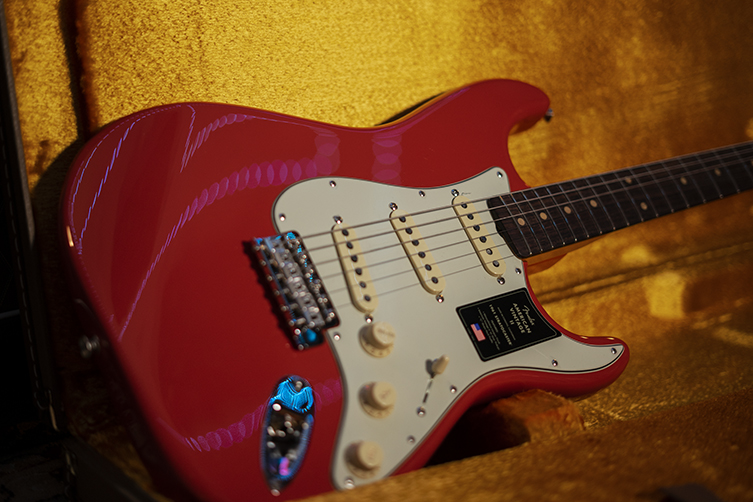
Fender tended to get things pretty much ‘right’ straight off the bat. People want more of it, but it has to be right.
Fender American Vintage II Range
It’s all about constant revision and refining for Fender, even with ranges like this new Fender American Vintage II collection, that speak more to the company’s heritage than other ranges. If you’re going to be looking back, you’d better get it correct, particularly with a brand as keenly scrutinised as Fender.
Every decade of production back in the golden era saw changes to myriad details such as neck profiles, hardware designs, fret sizes and even neck construction methods! As many Fender fans will know, the company was bought out by the CBS TV company in 1965, which was a notable factor in these changes. This means that there’s a lot of history to work with, basically.
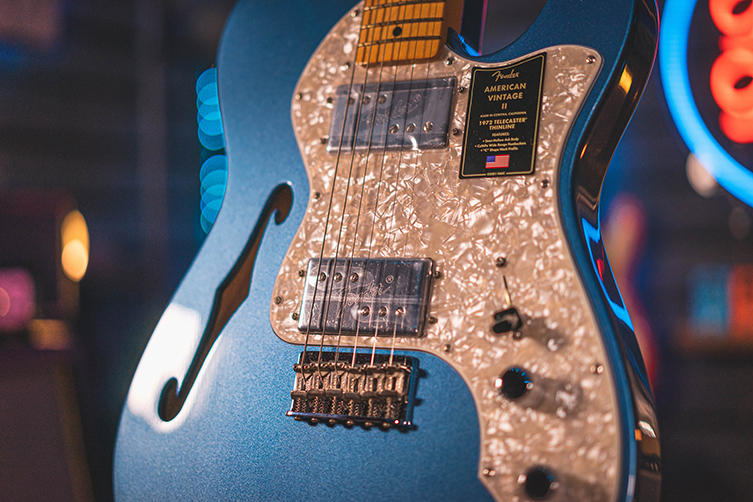
Tastes change, fashions come and go, and whilst vintage guitars remain just that - vintage, timeless - trends of the last 20 years have seen a re-examination of certain periods in Fender’s history. It used to be that only the fifties and sixties counted as worthy periods to pilfer for reissues, but the alternative crowd’s adoption of offset models and Deluxe Telecasters has somewhat changed the landscape in terms of what is considered viable for inclusion in new ‘vintage’ ranges.
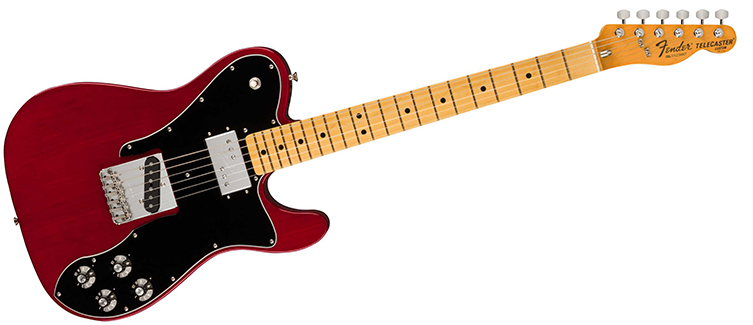
This is what we’ll see today in Fender’s brand new American Vintage II range. Following on in relatively rapid succession from the American Original series (it feels like they were only released about 4 years ago but it must’ve been longer), this new range sees Fender getting more specific with models, whilst very much playing to the crowd, as it were, in terms of their offerings. Curiously, accepted vintage dates for guitar examples (‘a 52 Tele’ and ‘a 62 Strat’ are meaningful terms to most Fender nuts) have been abandoned in favour of dates that are close but seemingly (arbitrarily?) different to those oft-used terms. As we’ll see, in some cases this makes sense and in others it maybe doesn’t so much. This is all incidental detail, of course. The proof of this new pudding will be in the recipe and the cooking. Let’s take a bite.
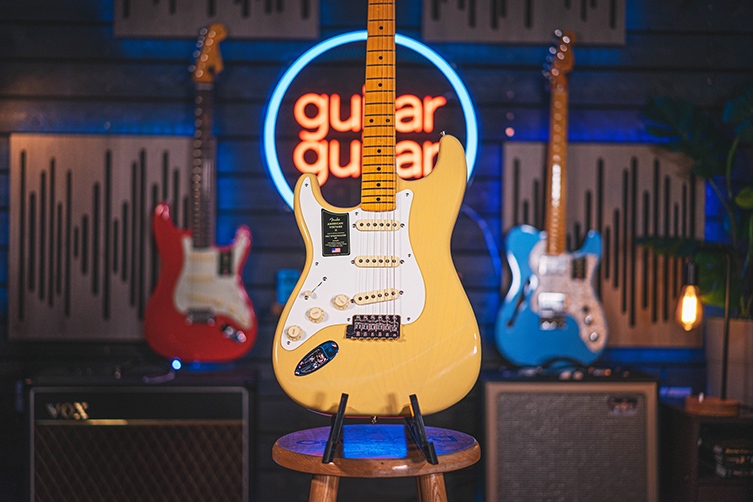
The Range at Large
So, what’s drawing this range together? What’s Fender’s aim here and how do those aims fit into the rest of the company’s quite comprehensive offerings?
Put simply, the Fender American Vintage II range is for people who want high-end, US-made vintage Fender replicas. These guitars sit more-or-less alongside the American Pro II series (think of those ones as the current US-made ‘Standard’ range) and the more contemporary spec’d Ultra range. These are all hovering around the same rough price point, and are collectively the highest-end Fenders on offer outside the Fender Custom Shop. Obviously, the Ultra range caters to modern ‘performance’ types with locking tremolos and compound radius fingerboards. The American Pro II guitars offer a blend of the old and the new, in order to cater to the largest cross-section of players, leaving this new American Vintage II range (replacing the American Original series, which in turn replaced the first American Vintage range. Phew!) to address the more vintage-minded player.
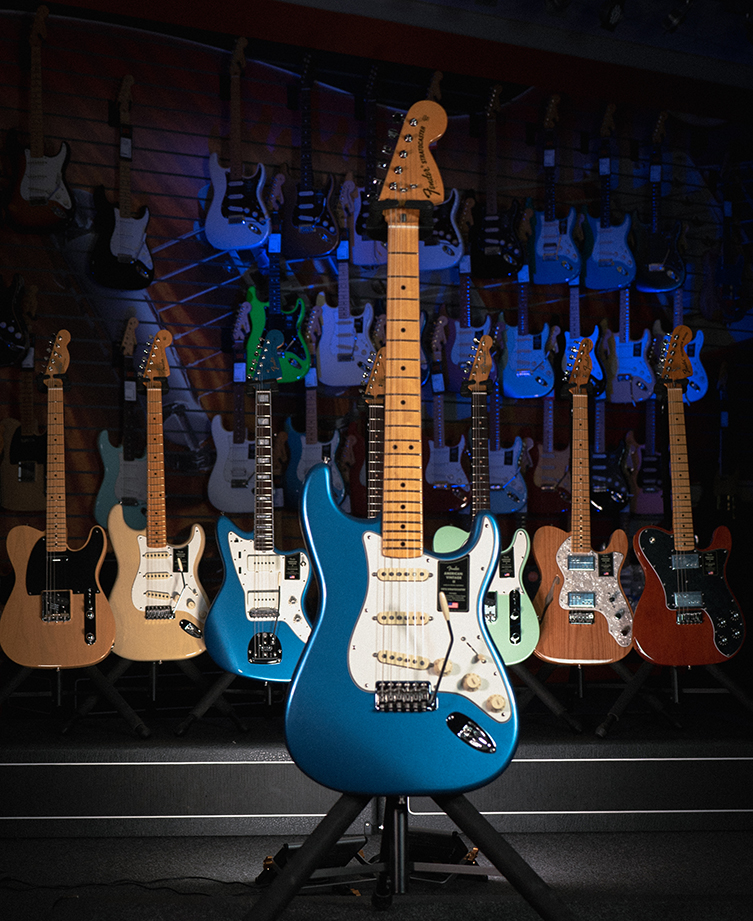
In reality, that’s a sizeable audience. As we mentioned before, guitarists tend to be quite retrocentric folk, and the closer their guitars can be to those golden era examples, the happier they often are. Thus, this is an important area for Fender to get right. Knowing this, Fender have largely played it safe and given players broadly when they expect and what they want. Now, ‘playing it safe’ here is no criticism: this type of range is about paying service to history, not for taking creative risks. As we’ve covered, Fender are pretty comprehensive with their offerings, and playing it safe here is exactly what we want Fender to be doing! They’ve delivered a relatively large selection of carefully spec’d instruments, in the colours you’d by-and-large hope to see. We’ll detail a selection of models in just a second (there are actually too many to feature the complete lineup here), but first, we’ll look at features relative to the whole group.
- Period-correct finishes: Yes, all of the 50s and 60s models have the historically correct nitrocellulose finish applied. You’ll enjoy the unique touch, the lovely smell and the agreeable way in which this finish will age. If you’re a relic person (think of your warranty before you get the sandpaper out, okay?), you’ll know that only nitro finishes really work convincingly when ageing guitars. These are not aged instruments, but they will take on a very pleasing patina as they grow older. 70s models have Polyurethane finishes, a tough, hardwearing and always-beautiful lacquer that is also historically correct for instruments from the 1970s.
- Vintage radius fingerboards: You find a relatively diverse selection of fingerboard materials and builds here in the American Vintage II range, but they will all - bass and guitar - feature the 7.25” radius fingerboard. It’s vintage correct for sure, and plays an important part in the feel of the instrument. Having tried a number of these guitars out, we can confirm that huge Gilmour-style bends are absolutely achievable, with none of the dreaded choking out occurring. It’s just a matter of having a nice set up. The basic message here is: don’t feel you need to look elsewhere because you’re a dedicated lead player! We don’t think any of the new range will offer you resistance in that regard.
- Period-correct details: We’re impressed at how non-standardised this range actually is. For example, the 1963 Telecaster and the 1961 Stratocaster both feature rosewood fingerboards, but the Tele has a round laminated board whilst the Strat features a slab board. We’ll get into this more deeply in a little while, but this type of distinction is to be applauded. How much simpler would it be to simply leave it at ‘rosewood fingerboard’ and not differentiate? This shows how much Fender wants to capture that authenticity, and pass it on to players who appreciate the difference. Impressive!
- Pure Vintage Pickups: Every model has its own set of specially voiced pickups, relating to historic analogues. It’s not a case of ‘these are vintage-style pickups’ at all: the 60s Strat sounds different from both the 50s variant and the 70s one, due to different winding and magnet choices. Also, the Wide Range humbuckers on the 70s Teles are made ‘correctly’: they are not just PAF-clones with the right-looking covers. We’ll talk more about these soon, but it’s a further encouraging sign of commitment to authenticity that these guitars all have their own precisely designed pickups.
So, those are some pertinent points that are relative to the whole range. Now, let’s have a brief skip through some specific models, shall we?
Fender American Vintage II 1951 Telecaster
We may as well start at the start, eh? This guitar needs no introduction, though it’s worth noting that the change of date from 1952 (52 is the shorthand for these blonde teles) to 1951 is actually bang on the money, since Fender renamed their ‘Broadcaster’ into ‘Telecaster’ in late 1951, after a dispute with Gretsch over the original name. So, in 1951, your Fender could’ve been a Broadcaster, a No-Caster (they hadn’t thought up the new name but still sold guitars) or indeed a Telecaster.
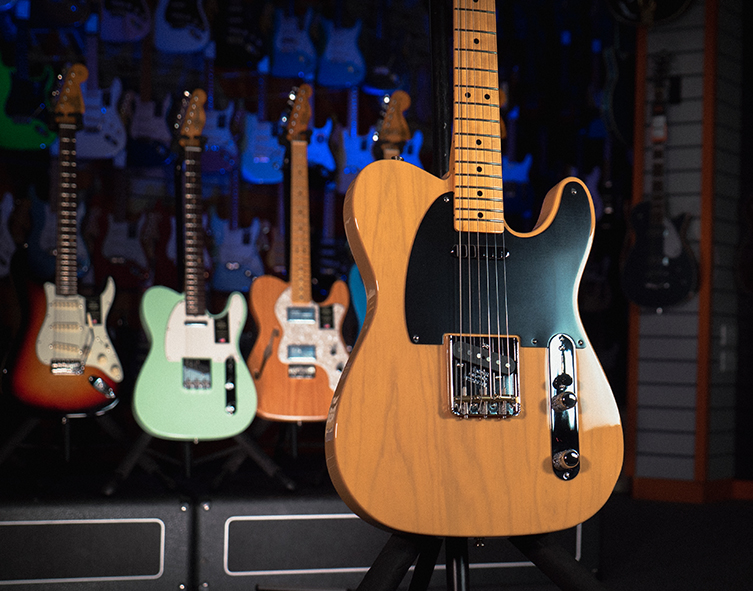
Excellent. So, how does the American Vintage II 1951 Telecaster measure up? Well, the first thing that impressed us was the neck. Early 50s necks were all reputedly large in profile, and this ‘U’ carve is testament to that. It’s big, round, proud and we love it! Married with the 7.25” radius, this guitar is super comfortable and encourages you to write tunes and parts on it, rather than falling down lead guitar rabbit holes. This is very much in keeping with the ethos of many Tele players, so we’re glad to find that result!
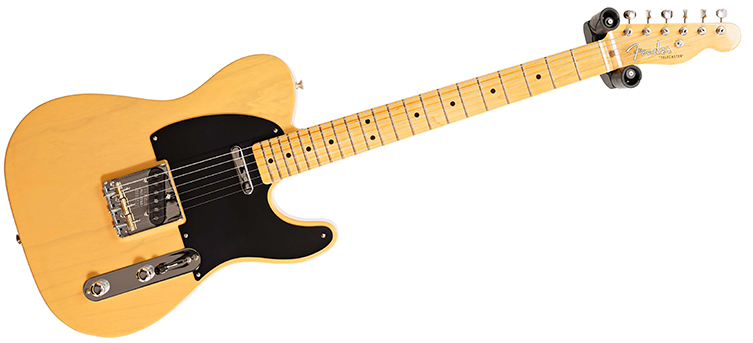
The Butterscotch ‘blackguard’ model (so named for the single ply black pickguard) is made with an ash body, and a set of brass saddles in the bridge, which combines with that ash to bring a strong and very ‘textbook’ Tele sound. Fender have bigged up details on their promo literature about things like the 12th fret dot inlays bring fractionally closer together, as they were in the 50s. Whilst we wouldn’t necessarily notice this level of detail ourselves, knowing about it does somewhat improve the appreciation!
Fender American Vintage II 1954 P-Bass
It may initially seem a bit overblown to call the Precision Bass a more important invention than anything else Fender have done, but if you think about it for a second, it may well just be the case! Released in 1954, all of a sudden bassists had a portable, solid, reliable instrument that was easy to tune, easy to service, and one which let the player move around a little on stage. Prior to the P-bass, all bassists had were acoustic upright basses, enormous hollow behemoths with sub-par contact mics for pickups. Bassists did not take any convincing to adopt the new technology offered them by Leo Fender!

There’s some (perhaps dubious) statistic out there saying that something like 70% of ALL recorded bass lines have been performed on a Fender P-bass. Whether it’s true or not, it’s obvious that it’s an important part of culture.
Anyway, this American Vintage II 1954 P-Bass is offered in two finishes - Vintage Blonde or 2 Tone Sunburst - both with ash bodies. As befitting history, a specially wound single coil pickup is supplied here, not the famous split-coil pickup. Indeed, the split coil didn’t make its debut for some years, so Fender are again onside with history.
Where things get a little fuzzy in a historic sense is with the headstock. The Tele-ish design you see on today’s model is true enough until part of the way through 1954, when Fender updated the P-Bass’s look to synchronise more closely with the then brand new Stratocaster model. So, again, it’s not wrong, but many 1954 basses will not have the same look as this one.
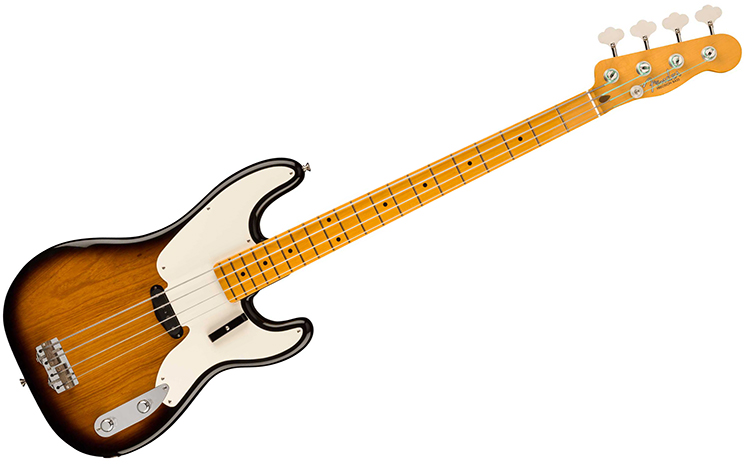
Nevertheless, there’s a great chunky C-shape neck here, and resonant tone for days. It’s a wonderful evocation of the early days, and it’s a considerable pleasure to play on.
Fender American Vintage II 1957 Stratocaster
1957 is the seminal year of the fifties strat, and this model captures a great deal of that guitar’s early charm. In addition to the vintage radius, Fender have stuck to the v-neck profile as it was in 1957. It’s one of those situations where many players aren’t too into the idea of such a neck until they try one, and then loudly wonder why all necks aren’t such. It feels excellent, and the vintage tall frets onboard help paint a very accurate picture of a vintage Strat.
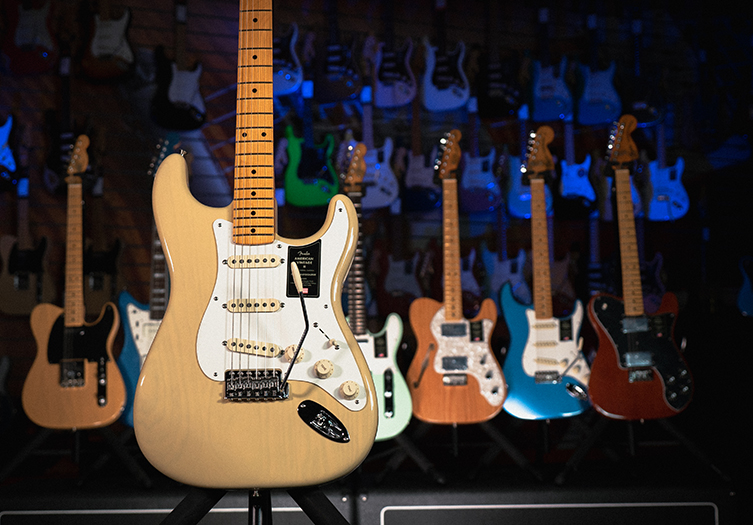
One of the most significant factors in just why a Stratocaster sounds the way it does (compared to the sound of, say, a Telecaster) is the bridge. There’s a big old hole cut out of the body to facilitate the bridge, which itself has a steel block that the strings pass through. This block is held by a set of springs anchored inside that big hole. This all impacts the tone, particularly the parts that directly touch the string. On this American Vintage II 1957 Strat, Fender have done things right in terms of the ‘old ways’: the block is made from cold rolled steel, and the bridge saddles themselves are made from bent steel. It’s accurate and therefore delivers an accurate sound, particularly since the Pure Vintage pickups on here are perfectly low-wound and glassy. Aces.
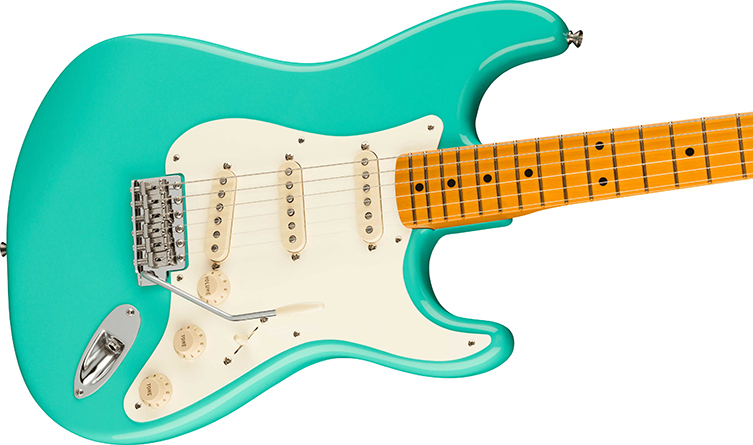
Fender American Vintage II 1961 Stratocaster
As you’d expect, the 1961 Strat adds a rosewood fingerboard to proceedings, and a suitably (slightly) hotter set of pickups. That rosewood board is of the ‘slab’ variety, meaning a good chunky board with a flat back has been glued to the shaved-flat face of the neck. This isn’t always the case with rosewood boards, as we’ll see in a second.
The bodies for these American Vintage II 1961 Strats are alder, and you’ll notice the burst finish has a more intense black section as well as the addition of the red into the burst.
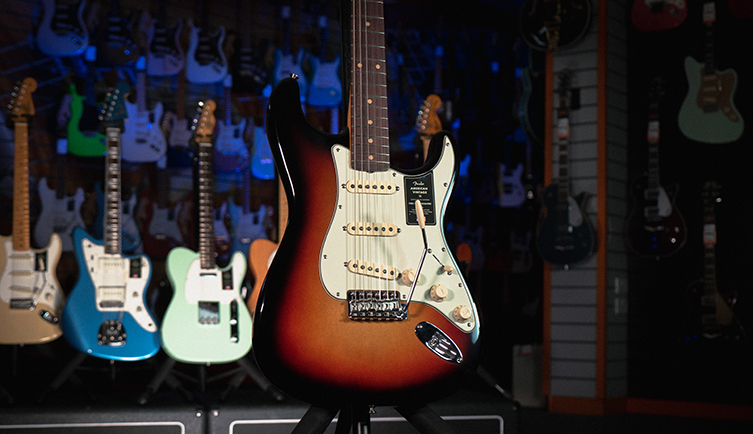
Fender American Vintage II 1963 Telecaster
The Sixties iteration of the Telecaster has moved from the usually-referenced 1962 to one year ahead. Is this because there is no double body binding on this model? Most fans think of a ‘62 Tele as being bound, even though in reality, it was a slightly separate model named the Telecaster Custom.
Whatever the reason for the year change, the American Vintage II 1963 Telecaster is full of cool period detail. In comparison to the 61 Strat, this Tele from two years later - if you’ll permit us to behave that way (they are all from 2022, afterall) - swaps the slab rosewood board for a ‘round laminated’ rosewood board. In essence, this term describes a fingerboard that’s curved at the back, as opposed to flat, which is then glued to an equally curved neck front. It means that the rosewood is thinner, basically, but in terms of playing differences, it’s more of a personal opinion than anything else, really. Round laminate fingerboards became the normal thing for Fender in late 1962 (we believe) and stayed that way until some point in the 1980s.
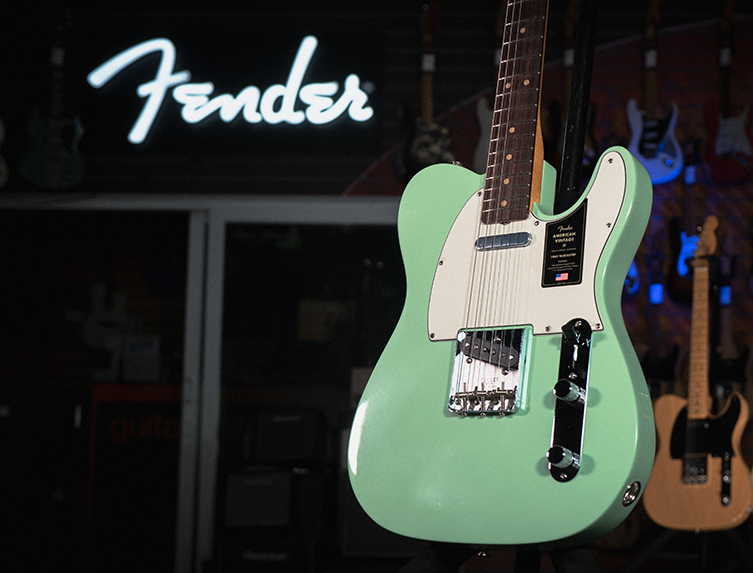
Aside from this, there are more cool details here, not least the included ‘ashtray’ bridge cover! Too cool! Whether you end up using it or not, it’s pretty awesome to have this on hand for an instant retro vibe. Ashtray bridge covers got their name after players took ‘em off their Teles and used them to quite literally stub their ciggys out on. The bridge itself has steel saddles this time, too. It all plays a part!

One further interesting thing to note is that the body is made from alder apart from the Crimson Red colour, which uses mahogany!
Fender American Vintage II 1966 Jazzmaster
We’ve said it a whole lot in recent years, but the Jazzmaster’s popularity has gone beyond ‘flavour of the month’ renaissance and is now just flat-out popular. As such, it has shifted from an alternative outsider to become a significant addition to almost all of Fender’s ranges.
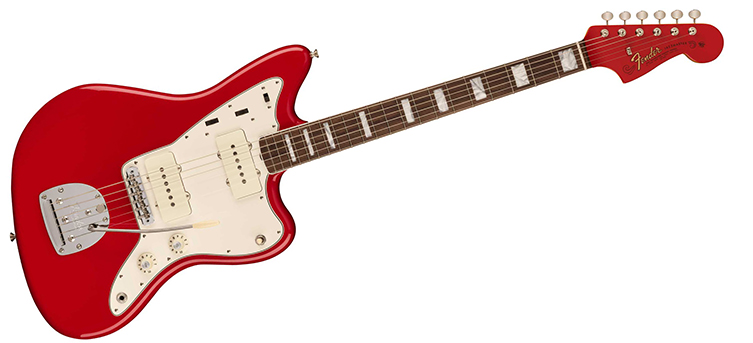
Today’s American Vintage II Jazzmaster is based on those from 1966, a good 8 years after the design was first revealed to the public. This model, as Fender so succinctly puts it, is the ‘dolled up’ style with white binding on the fingerboard, block inlays and a matching painted headstock. In other words, it’s unspeakably cool. Great sounding pickups and ‘proper’ switching (the rhythm/lead split etc) add up to make this a very tough offset to beat. There’s no Jaguar model though. Sad!
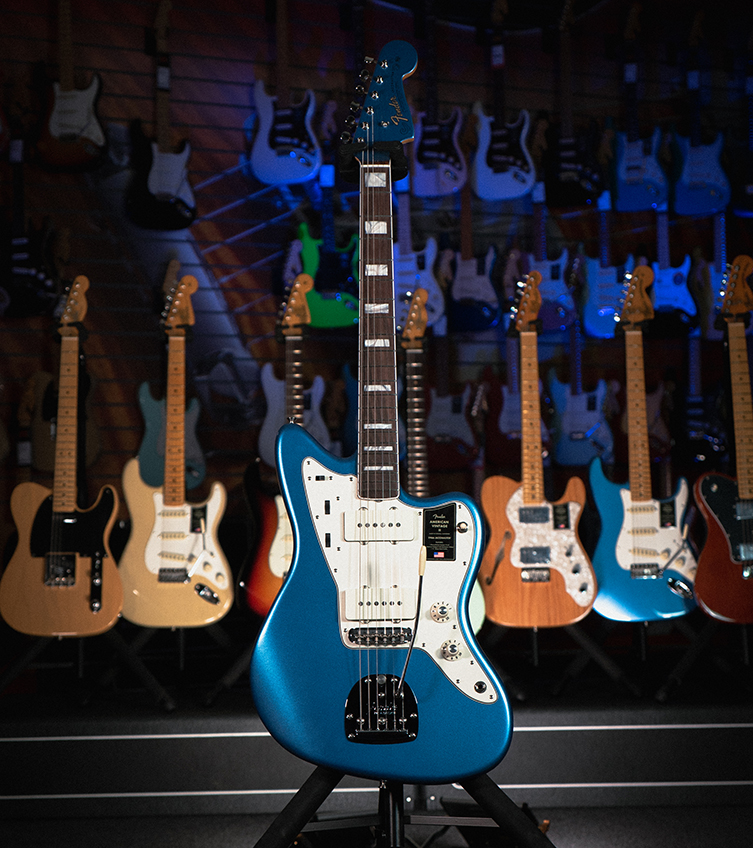
Fender American Vintage II 1972 Thinline Telecaster
Our final pick today is the really rather gorgeous Thinline Telecaster from Fender’s 1970s line. The Thinline originated in 1968 and featured a set of single coil pickups alongside its distinctive f-holed semi hollow body. Today’s guitar is based on the revamp from just a few short years later, where they added the now-famous Wide Range humbucker pickups.
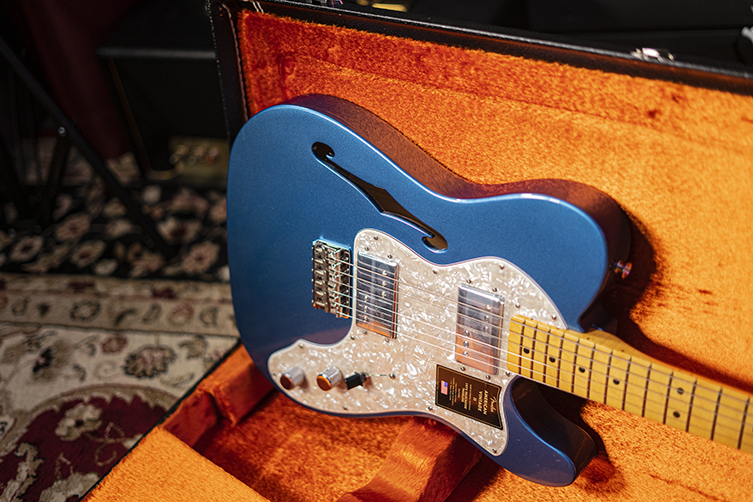
If you’d like to learn more about Wide Range pickups, please do click through to our Guitar Pickups Explained blog, but in the meantime, suffice to say that Fender have made a point of resurrecting the correct CuNiFe (Copper, Nickel and Iron) magnets to use in these. Wide Range pickups are far closer to the sound of a single coil, whilst still bucking the hum like a standard humbucker.
This Thinline very much sticks to the historical details: there’s a bullet truss rod, a three-bolt neck joint and even the microtilt adjustment feature! If you want vintage, you’ve got it right here.
Vintage Done Right
Whoever is making the big decisions at Fender these days is doing an excellent job. Being able to serve up properly spec’d, accurately constructed instruments like this, whilst also offering ranges like the Ultra and so on means they are really paying attention to the market. There will always be an audience for a range of American-made instruments that pay proper respect to historical gems. The Fender American Vintage II range gets this concept, and has delivered with particular elan. If you treasure those eminently classic electrics from Fender’s golden eras, then we’re confident you’ll have a deep and rewarding experience with these guitars.











